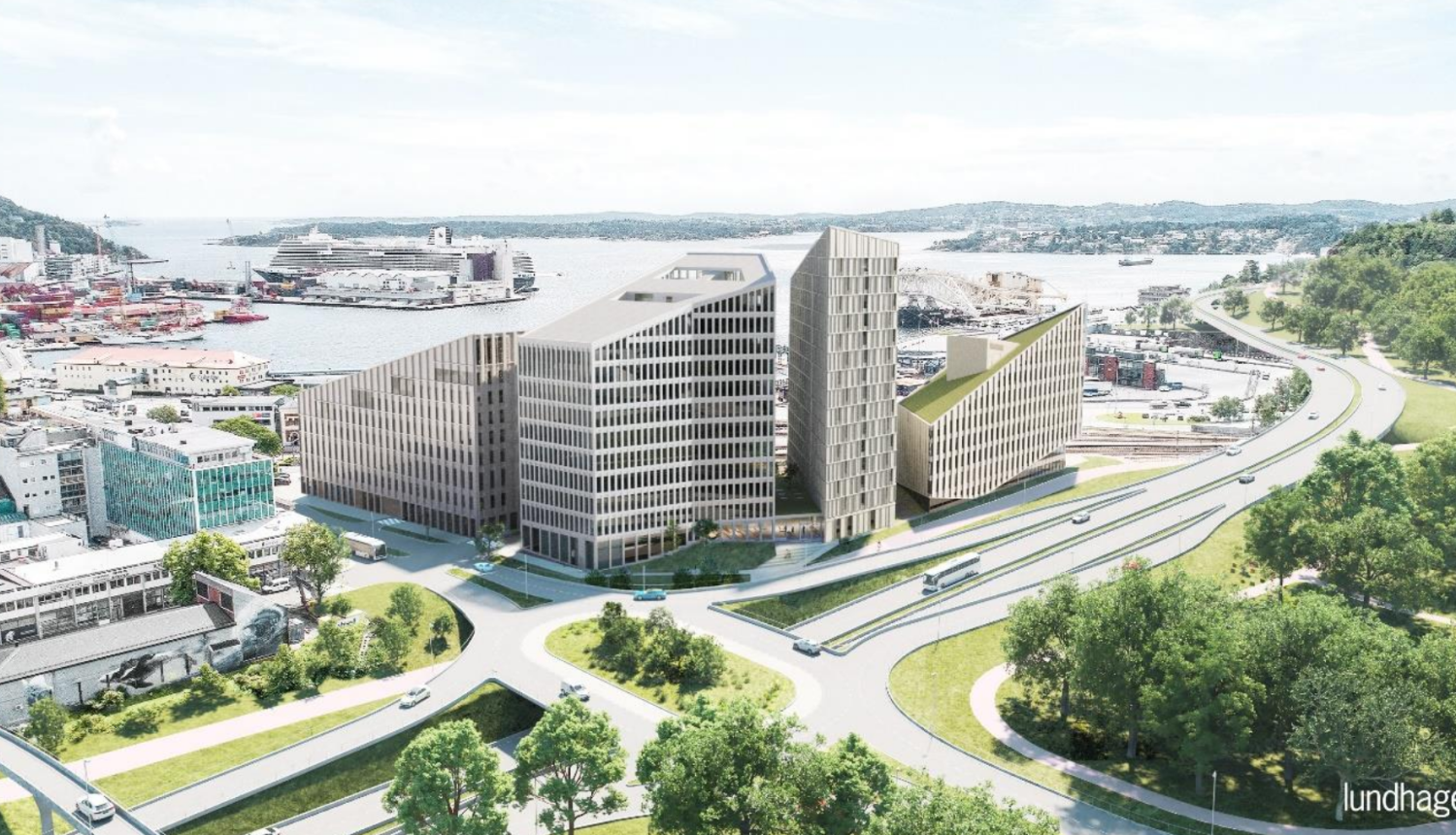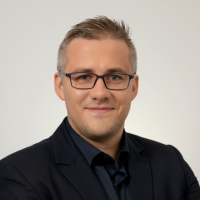A strong construction offering characterized by quality, sustainability, and cost-effective solutions, as well as fast delivery and long-standing experience in the Norwegian and Nordic markets – these are the main reasons why leading Norwegian construction companies and real estate developers are increasingly choosing Latvian construction companies to implement projects of various scale, says Austris Keišs, Export Manager in Norway at Invest in Latvia.
“The ‘bonus package” also includes a high-quality work culture, responsibility and the ability of Latvian companies to take on complex projects in combination with excellent environmental standards. And, of course, Norway’s outstanding connectivity with the Latvian capital Riga, which is served by good direct flights from Oslo, Trondheim and Bergen,” Mr Keišs adds.

Ready for even stricter environmental requirements
Sustainable construction practices have been successfully implemented in Norway for 15 years by Latvian company UPB, one of the largest subcontractors in Scandinavia. The company offers load-bearing frame structures and architectural façades, providing a full service cycle within a single project.
“Our focus is sustainability at all stages of our operations. UPB's production facilities manufacture concrete and metal products with reduced CO₂ emissions, as well as sustainable aluminium glazed structures with high added value. During the design phase, we look for ways to reduce the weight of the building and ensure a larger construction area,” says Raitis Kols, UPB’s business development manager in Norway.
“Looking ahead, the industry will face even higher requirements for CO₂ reduction and energy efficiency, and we are ready to implement them and continue to advise clients on how to balance their budget, building design, and the implementation of CO₂ emission principles in practice,” Mr Kols predicts.
A promising direction with growing demand at the moment is rehabilitation-type projects, where existing buildings are reconstructed for new purposes. The company is currently implementing such a project in Oslo called Qvarteret, wherein an old building is being transformed into modern office space. Another successful UPB project in Oslo is the building at Fredrik Selmers Vei 2, where the company is constructing the frame and façade using recycled aluminium, cement substitutes, and green metal to achieve a significant reduction in CO₂ emissions.
In 2025, the company will implement an ambitious hotel and office project, Quadrum Port, in the centre of Kristiansand, covering an area of 25 000 m², providing a full-service frame construction for two high-rise buildings. The structures will be made of concrete with reduced CO₂ content and more environmentally friendly metal, thus abiding by the principles of sustainable construction. Both buildings are planned to obtain BREEAM “Excellent” certification. Every year, UPB implements more than 20 projects in Norway, Sweden and Denmark, employing 150 skilled assembly specialists and highly experienced project managers.

Wood continues its winning streak
Throughout Europe, wood continues to maintain its leading position in building construction as a sustainable and environmentally friendly material.
CLT Profi, one of Northern Europe’ s largest manufacturers of solid wood structures and one of Europe’ s most competitive CLT (cross-laminated timber) panel manufacturers, predicts that the share of solid wood in public and residential construction in the region will double over the next 5-10 years, as governments introduce mandatory CO₂ ceilings for the life cycle of buildings and contracting authorities set minimum proportions for timber structures.
“Our advantage is a complete ‘design-manufacture-install’ service with clearly measurable emission savings, which is demanded and appreciated by an increasing number of customers,” explains Andris Dlohi, Board Member at CLT Profi.
To be able to compete, sustainability must be integrated throughout the entire construction cycle. For example, the timber used by the company comes from FSC/PEFC-certified northern forests. More than 60% of the production facility’s energy is provided by biomass and green electricity. LCA tools are used in design to provide customers with a CO₂ comparison between concrete and steel use already in the project concept phase, etc.
A successful project that clearly illustrates CLT Profi’s approach to sustainability is the 1400 m² Emma Hjorth Skole school building in Norway, completed in 2024, which was constructed using 2200 m² of CLT which forms the main load-bearing structures. Compared to the original concrete concept, CO₂ emissions were reduced by 47% and construction time – by three months.
Latvian company ZAZA TIMBER, one of the leading manufacturers of glued laminated timber structures, which is active in the Nordic market, particularly in Sweden, Denmark, and Norway, also sees a promising future for timber construction. Projects outside Latvia account for approximately 60% of the group’s revenue.
“Wooden buildings are experiencing a renaissance around the world, but competition in the segment is fierce, so it is important to specialize. Our strength lies in non-standard projects, large-scale, up to 32 meters long, sometimes curved structures, labour-intensive CNC processing with steel fasteners already incorporated in the factory, and surface treatment,’ explains Māris Peilāns, Chairman of the Board at ZAZA TIMBER.
The company has been supplying glued laminated timber structures to the Norwegian market for almost ten years, but began designing and assembling them in Norway less than five years ago. ZAZA TIMBER has manufactured wooden structures for more than 20 large and small buildings in Norway, including bridges (Tveit Bridge (Tveit bru) in Valdres, the Skiers’ Bridge (Beitostølen), residential homes, shops, office buildings, schools, sports halls, care centres, churches, etc.
The latest project in Norway is in the town of Minnesund, where the company is assembling and building a new concept electric charging station for Circle K. For the Aker Tech House office building in Fornebu, ZAZA TIMBER designed a façade more than 78 meters in length and 33 meters in height, as well as two large skylight structures made of wood and glass. The company then manufactured the necessary glued wood structures, totalling 218 m3, and carried out their assembly and construction on site.
ZAZA TIMBER manufactured and delivered glued laminated timber (glulam) structures for the construction of the KF Skolen school in Stavanger. This project involved a wide variety of beams and columns, with 73 different types of structures and a total of 250 structures.
For the construction of the seven-story office building Aker Tech House in Fornebu, ZAZA TIMBER designed, manufactured, and installed the load-bearing timber structures for the building’s façade and skylights. Façade: length – 78.9 m, height – 33.8 m, width/depth – 4.0 m. Skylight sections: 2 x 428 m2.
The ZAZA TIMBER factory in Latvia manufactures custom-made glued timber structures up to 32 meters in length, processes them using large-format CNC machines, installs mounting fasteners, and provides transport to the construction site in Norway.
Looking for smarter ways of manufacturing
According to Tenax Panel, demand for sustainable, environmentally friendly products is also growing in the construction of industrial and logistics buildings, especially in the Nordic countries. The company is one of the largest sandwich panel manufacturers in the Baltics, and is also implementing many large-scale projects in Scandinavia.
In order to implement the principles of sustainability, Tenax Panel aims to make each sandwich panel smarter and more energy efficient by developing panel fillings that are safer for the environment and people, and by optimizing technologies, supply chains, and raw materials.
“New buildings are constructed in accordance with BREEAM, DGNB, and other sustainable construction certification systems. Customers demand that products comply with certification requirements, as well as environmental product declarations (EPDs) that indicate their CO₂ footprint,” says Zaiga Fogelmane, Commercial Director of the company.
The company’s largest projects in Norway have been implemented in Gardermoen – the I OneMed Services logistics centre (19 731 m²) and the Sport Holding complex for a group of sports equipment retailers (36 000 m²), while logistics buildings have been constructed in Oslo (Oslo Logistikkpark, OLD 1, OLD 4). All buildings are certified to BREEAM standards.
PrīmX concrete technology: faster, more efficient, more sustainable
Primekss is an international concrete engineering and construction company operating in more than 20 countries around the world, with its headquarters in Riga, Latvia. The company offers both high-performance industrial flooring and structural solutions: foundations, raised floors, combined systems with steel profiles and waterproof structures. Primekss has developed the world’s only patented zero-joint concrete technology, PrīmX, which significantly reduces the thickness of structures and material consumption, thereby reducing CO₂ emissions and resource consumption.
“We specialize in the development and implementation of innovative industrial flooring and structural solutions, supplying high-quality concrete technology solutions to leading construction companies, real estate developers, and global innovation leaders such as IKEA and Volvo, in the Nordic countries and in many other places around the world. Exports account for 95% of our turnover, and our strength lies in full process management: from research and design to manufacturing of additives, construction, sensors and after-sales service,” explains Uldis Ķemers, Sales Manager in Norway for Primekss.
The company has been operating in the Nordics for more than 20 years, becoming a trusted partner in the construction of logistics, manufacturing, cold storage, data centres, and gigafactories. One of the company’s most significant projects is a 62 000 m² logistics facility in collaboration with Logistic Contractor Norge AS. The company provided flexible execution of the project with several design and schedule adjustments, optimal construction speed with large-scale casting technology, and high sustainability results, reducing CO₂ emissions by almost 750 tons.
At the same time, the company’s philosophy in any project is to achieve more by using less, which means:
-
thinner but stronger floors and structures;
-
significantly lower consumption of cement and steel;
-
zero-joint technology with minimal maintenance costs;
-
waterproof foundations and structures for longevity;
-
use of sensors and data for quality tracking.
“Looking to the near future, we see a growing demand for CO₂ reduction solutions, zero-joint floors, waterproof structures, and faster construction. Automation and robotics, digitalization, and the demand for data-driven construction will also become increasingly important. We are in a unique position because we are able to combine floor and structural solution engineering in a single approach,” Mr Ķemers adds.

Revolution in the active leisure industry
A rapidly growing construction segment worldwide, including in Scandinavia and Norway, is active leisure infrastructure. From the United States to China and from Northern Norway to South Africa – this is the business geography of Latvian company We Build Parks. Its main areas of activity are the creation of cycling, snowboarding, wakeboarding, running, skiing and other active recreation parks in the Baltics, Scandinavia and elsewhere in the world.
“In the Nordic countries, we work with subsidiaries in Finland, Sweden, and Norway. Since 2018, we have gained extensive experience, including building a snow park for the Beijing Olympics, developing new products for the Nordic countries, and we plan to make cross-country skiing and running more fun and attractive for children – the potential is huge,” says Jānis Jansons, CEO of the company.
Sustainability principles are implemented by seeking unique, creative solutions to make the urban environment and sporting activities more accessible to a wide range of social groups. For example, the company creates structures not only for professional training, but also for beginners with a focus on people in wheelchairs, bicycle structures for children with a focus on learning the skills needed to overcome obstacles encountered in the urban environment, etc. Sustainable materials are used in construction to reduce maintenance and increase the service life of the equipment.
“There is a ‘revolution’ taking place in our industry in the field of bike parks. Whereas bike parks used to be exclusive to mountain resorts and required the purchase of tickets, since we implemented the ambitious Harstad Bike Park project in Norway, such large, full-service bike parks are becoming the norm in other cities as well. Our bike park project, Harstad Bike Park, which was named Sports Facility of the Year in Norway in 2023, has become a destination for city residents and visitors alike, and has inspired other cities to create similar parks,” Mr Jansons notes.




